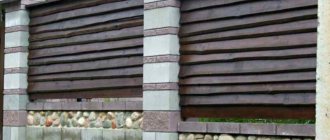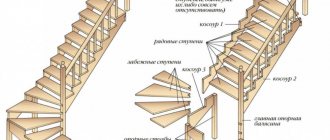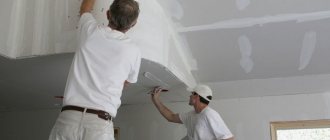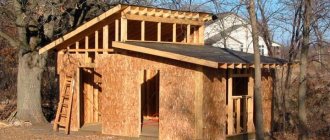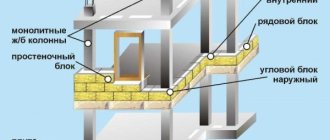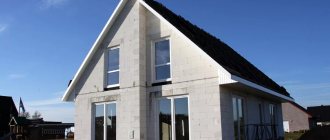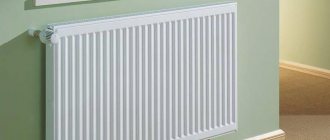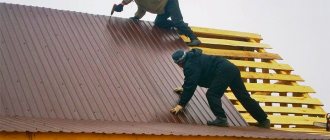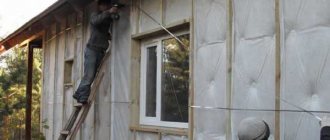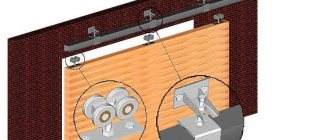No matter how high-quality and expensive the parquet is, sooner or later it will require restoration. A mandatory part of the restoration work is polishing the parquet using special tools and electrical equipment in order to speed up the process and bring it to a higher professional level.
Is it possible to sand wood flooring with your own hands, how to do it without damaging the floor, where to start and what work to plan at the final stage? More on this below.
Sanding is sooner or later a necessary and completely harmless process for every parquet
Parquet sanding - what is it?
The process of sanding wooden surfaces is carried out using a sanding machine .
Other grinding devices are also used for the comprehensive restoration of wooden surfaces. During sanding, the top layer of wood and the varnish covering it are removed. Most often, 1-2 mm of material is removed. Beneath is a fresh layer of wood with no defects such as dirt, discoloration or dents. As a result, worn-out flooring can regain its shine and last for many years. You can do the work of sanding parquet floors yourself, but you can hire a professional who will take care of the entire process of repairing a wooden floor.
note
- Industrial grinding equipment is very loud: bring headphones and make sure that the noise does not disturb your neighbors.
- Some types of parquet varnish have a persistent unpleasant odor, which is absorbed for a long time into curtains, clothes and upholstery of upholstered furniture: in this case, it is more advisable to inhabit the room only after the odor has completely disappeared.
- If the parquet has ripples due to interaction with moisture, is eaten away by insect pests, has serious damage, or has dried out to such an extent that the gaps between the dies reach five millimeters or more, it cannot be restored.
- Despite the significant difference in rental costs, an industrial grinder is preferable: it will get the job done faster and help you save your most valuable assets - time and effort.
- As a filler for colorless putty for parquet, it is best to use the dust remaining after sanding the parquet - this way the texture and color of the putty will ideally match the overall tone of the parquet.
Why is parquet sanding needed?
Gradually correct sanding of the parquet allows you to make the floor aesthetically pleasing, and subsequent varnishing, oiling or painting with paint protects the wood from damage and improves its appearance. Sanding can be carried out on many types of wooden floors, even those that are many years old, when their technical condition still allows. So when the wood stops looking attractive, you don't have to completely replace the flooring with a new one. Professional sanding is sufficient.
Advantages of sanding wooden floors, including parquet:
- Renewing the appearance of the floor - the old worn-out surface becomes like new again.
- Completely changing the appearance of the floor - Sanding can also be used to give the floor a different look than before. This is possible through the use of appropriate varnishes, oils or paints.
- Removing Dirt from Wood - The sanding process effectively removes dirt that has become embedded in the wood and cannot be removed by other means.
- Leveling and smoothing the surface - sanding can give the floor ideal evenness and smoothness. Any bulges or dents that have formed on the floor over the years will disappear.
- Capable of sanding other wood surfaces - this process can also be applied to baseboards, stairs and other wood elements.
- Low cost compared to new flooring - repairs are cheaper than replacing wood floors.
- Sanding can be done with your own hands - this process can be carried out independently, but to achieve the best result, you should choose the help of parquet repair specialists.
Are there any disadvantages to sanding parquet floors?
Sanding is an effective way to change the appearance of your floor. Does this method have any disadvantages? First of all, it is worth noting that sanding will change the appearance of the floor. Wood changes color over time, most often darkening, so after sanding the parquet will look brighter. It is not always possible to indicate in advance what effect varnishing the parquet will have, so it may turn out that the updated floor will not completely fit into the interior.
It is also worth noting that step-by-step sanding of parquet is a labor-intensive process that requires the premises to be taken out of service even for more than a week.
This is all that is needed for sanding and then varnishing or painting. Therefore, the work date should be chosen accordingly.
Tools, materials for working with parquet
In order to perform scraping efficiently and polished parquet has an excellent appearance, you must have:
- parquet sanding equipment, which can be rented to process a large area of parquet;
- a manual angle machine to process hard-to-reach places, because scraping parquet is not always possible by machine;
- sandpaper, which has a certain grain size, suitable for working with parquet: No. 40, No. 60 No. 80, No. 120;
- special putty mixture for wood;
- high-quality varnish;
- dust collection apparatus;
- available tools: scissors, a set of screwdrivers, rags.
Which wood floors can be sanded?
Sanding is a process that can only be carried out if the floor is in good condition.
The following surfaces can be subjected to this process:
- Wooden parquet is made from natural wood.
- Wooden mosaic is also made of natural wood.
- Plank floor - consisting of solid planks.
- Floor sandwich panels - they can also be sanded, but in this case pay attention to the thickness of the surface layer of the wood. When it is too thin, sanding is not recommended. Information about sanding capabilities can be found on the panel label or in the manufacturer's instructions.
- Wooden stairs - steps and other elements of wooden stairs.
- Skirting boards are made of natural wood.
When you are in doubt about whether a surface is suitable for sanding, it is best to take the help of specialists in this field, that is, wood floor repair companies.
When should you sand parquet?
Sanding hardwood floors is a process that is not usually done very often. This is usually done once every few years or even several decades, when the wooden surfaces have not been repaired for a long time. Parquet floor sanding is most often carried out when it requires repair, but it can also be subjected to this operation for other reasons.
For example:
- The parquet is worn out - the wood is rough, dirty, has chips and other defects resulting from many years of use.
- Parquet looks unsightly - stains and discolorations are visible on it, which deteriorate its appearance and cannot be removed by any detergents.
- The parquet is uneven - if the surface is uneven, sanding will give it perfect smoothness.
- The wooden floor has just been laid - when the floor is solid, it requires finishing, it is cleaned before further work.
- It is planned to change the appearance - sanding is also advisable when the parquet is not badly damaged, but the owner wants to give it a different look. This can be achieved using varnishes, oils and paints.
- Before applying new varnish, experts recommend sanding your parquet every time you want to revarnish.
When should you stop sanding your floor?
It is also worth noting that in some situations, sanding parquet flooring is not recommended, so it is better to abandon the repair and decide on a new floor. Sanding won't help if the floor is badly damaged throughout the thickness of the boards - then sanding the top layer of wood won't do anything because it will also be damaged underneath. It is also better to refuse sanding when the parquet planks fall off, are unstable, or the base under the parquet is damaged. It is best to choose a new floor.
Parquet and restoration - what signs are used to determine the degree of wear?
There are several reasons that influence the loss of the presentable appearance and partly the functionality of parquet. Most often, these are incorrect installation, errors during operation and maintenance, increased load on the floor, and others. It is quite easy to determine that repair, sanding and polishing of a parquet floor is necessary based on the following signs:
- the coating is dotted with small scratches, covered with cracks - traces of furniture, animal claws, heels, etc.;
- gaps have appeared between individual coating elements;
- the varnish has lost its shine and luster;
- the floorboards squeak when pressed;
- when tapping, a dull sound is clearly heard - a sign of formed voids under the floor.
These are the main signs indicating the need to first repair the parquet floor, and then sand it to restore its aesthetic appearance.
You shouldn’t let your parquet get to such a state that the only choice is to replace it.
Materials, tools and equipment necessary for parquet repair
Refinishing hardwood floors is a multi-step process. Although it is time consuming and requires diligence and patience, it produces outstanding results. The key point in this case is the appropriate selection of the right materials, tools and equipment. Together they give the floor a new look.
The following equipment is used to repair wooden floors:
- Parquet sanding machine.
- Edge grinding machine.
- Abrasive materials.
- Parquet polisher.
- Putty knife.
- Surface materials.
- Hand tools: spatulas, brushes, etc.
Parquet sanding machine
Grinding machines are devices whose task is grinding. This is a large, heavy piece of equipment equipped with a handle and operated by hand. Grinders are electrically powered and therefore must be connected to a power source.
Types of sanding machines for parquet:
- A disc grinder is a device equipped with a rotating disk coated with abrasive material.
- Belt sander - equipped with a sliding sanding belt.
In addition to abrasive materials, sanders are also equipped with a vacuum cleaner system with a bag that collects waste, that is, wood in the form of dust. Thanks to this, there is no dust left in the room where work is carried out. This type of floor sanding is considered dust-free.
Grinding machines weigh a lot . Usually it is about 60-65 kg. This high pressure means that better sanding results can be achieved. The selected models allow the use of additional load on the machine. It is equipped with practical wheels, so moving such a large and heavy device will not be difficult. Smaller belt sanders are also used and can be used at different levels. They are ideal for sanding stairs and small surfaces when using a large sander is not possible.
It's worth noting that heavy-duty sanders are recommended for floors that are glued to the subfloor.
Abrasive materials
For sanding parquet, abrasives are used in many options to choose from. They are selected depending on the type of device in which they will be installed, as well as the effect they should give. The most common are sandpaper in the form of discs or tapes. Abrasive papers differ in their gradation. They are divided into coarse-grained and fine-grained. The higher the grit number, the finer the sandpaper.
The work begins with materials with the coarsest grain, and then moves on to the finest, more delicate for the surface. The type of sandpaper depends on the stage of work, as well as the type of wood from which the floor is made. When the wood is harder, such as oak, then it is necessary to use stronger sandpaper.
Putty
A refinished wood floor can show various losses. That is why it is recommended to supplement them so that the effect of the work is optimal. An important material in this case is putty. Allows you to fill damage and level the surface. Floor repair putty most often consists of a special resin liquid mixed with wood dust generated during sanding. The putty prepared in this way matches the color of the parquet perfectly, so the spaces filled with it do not stand out against the background of the floor.
Surface materials
A large group of materials used in floor refinishing are materials known as finishes. They are applied to a sanded and polished surface to protect it and give it an attractive appearance.
Wooden floors can be finished with the following materials:
- parquet varnish,
- oils, waxes,
- paints.
Manufacturers offer them in various versions so that you can adapt them to your idea for the floor and the design of the entire interior. Also, depending on the material chosen, a certain degree of surface protection can be achieved.
Hand tools: spatulas, brushes, etc.
When refinishing hardwood floors, a variety of hand tools are also used. These include spatulas for applying putty, paint brushes, and rollers.
Tool for sanding floors and parquet
As already noted, different factors determine the need for different types of equipment for grinding work.
Manual scraper for parquet
Let's start the review with the tool that gave the name to the scraping procedure itself - cycles. What is it, what types are there, application features, sizes, parameters and prices.
A scraper is a hand-scraping tool that scrapes rather than planes wood flooring. The design of a manual cycle is quite simple - a metal plate sharpened at an angle, fixed in the handle.
Manual scraping – technical parameters:
- The thickness of the blade determines the height of the coating (taking into account the paint layer) removed in one pass (burr size). The optimal thickness is 0.7-0.8 mm. The thickness of the layer being removed will be tenths of a millimeter;
- blade width. A wide blade increases the area cleaned in one pass, but is more difficult to work with. Recommended width is 45 mm.
- handle length. The shorter the handle, the easier it is to control the level of pressure on the scraper, the smoother the coating will be after scraping. Optimal length 200 mm;
- handle material: plastic or wood. Selected according to the user's tactile sensations;
- additional devices. The cycle can be equipped with a clamping handle, which will increase the force on the tool;
- figured cycles are used for scraping complex shapes on the floor (for example, figured wooden plinth).
Price list for manual cycles
| Cycle width, mm. | Handle material | Cost, rub. |
| 25 | Plastic/plastic | 105 |
| 45 | Plastic/plastic | 123 |
| Tree | 100 | |
| 65 | Plastic/plastic | 160 |
| Tree | 120 | |
| 45 mm. with power handle | Plastic/plastic | 153 |
| Accessories (blades) | From 33 depending on width | |
Material prepared for the website www.moydomik.net
Pros and cons of cycles compared to abrasive processing
Benefits of using cycles:
- cheapness;
- the ability to perform work in any place, including hard-to-reach places;
- no visible scratches on the parquet (from abrasive);
- indispensable when sanding artistic parquet, because allows you to change the direction of scraping depending on the direction of the wood fibers;
- no dust. In the process of removing a layer of wood, small shavings are formed.
Disadvantages of using cycles:
- duration of the procedure;
- removing a relatively thick layer of wood;
- labor intensity and physical fatigue. Work is carried out in an uncomfortable position, resulting in pain in the back, arms, and knee joints.
Note that currently the scraper is used only for scraping the coating on a local scale - when replacing one or two floorboards, or when there is a strong desire to save money. Moreover, masters advise using a factory-made scraping tool.
At the same time, you can make a cycle with your own hands. For manufacturing, a sharpened piece of metal (an old hacksaw blade) or a piece of glass 2 mm thick is suitable. with a smooth bend. Of course, such a tool is not suitable for scraping a large area, but it will help to complete work on a small area or scrape a part. The metal counterpart will last longer. For ease of work, a metal blank is placed between pieces of wood and wrapped with electrical tape.
Sanding parquet - is it worth doing it yourself?
You can repair your wood floors yourself, or you can take the help of a company that will take care of the entire process. Then step-by-step polishing of the parquet will be carried out comprehensively and professionally. On the other hand, doing it yourself means lower costs. What should you choose?
Do-it-yourself parquet sanding
When the floor needs repairs, you can work on it yourself. This is a good choice for any enthusiast who has some free time. Then you can save a lot of money. For best results, read sanding manuals and purchase the appropriate equipment, tools and materials.
You can purchase a grinder and polisher yourself, but you can also rent them , which is definitely a cheaper solution. On the other hand, improper sanding can damage the flooring , for example by creating unsightly pits. People who have never done this type of work before may find it difficult to do so and should spend more time training in this area.
Parquet sanding by a professional
parquet sanding companies . A specialist who performs such work is a master. Choosing a good company that provides repair services means confidence that the work will be completed comprehensively and professionally. Companies then provide all the services needed to renew the floor: repair, sanding, polishing, filling loss, varnishing, oiling or painting, so the customer receives a complete service. Taking advantage of this offer means greater convenience, time savings and excellent results. On the other hand, you should be prepared to pay a sanding fee - see paragraph below for more information on pricing.
Beginning of work
At the very beginning of the process of sanding parquet with your own hands, sandpaper number 49 is inserted into the machine and the width of the drum is set to 200 mm. Next, you should go through the entire area around the perimeter and reduce the diameter to 100mm.
To achieve the absolute effect, you should first go through the entire room diagonally, which is 45 degrees in relation to the walls of the room. At the end of this walk, continue sanding the surface in the direction of laying the parquet boards.
If you carry out this work on sanding parquet with your own hands outside the city, then you should stock up on a generator or a powerful stabilizer in advance. Their purchase or rental will be justified in the case when the voltage in the network is not enough for the grinder to fully operate. You should monitor the entire operation of the engine and if you notice that the speed has decreased, try disconnecting all electrical appliances from the network. If this does not help, then a generator (gasoline) or stabilizer will come to the rescue. These two units can provide enough voltage to continue work. It is in country houses that fluctuations in the electrical network often occur, which can lead to a complete stop of the entire process of finishing or repair work.
Do not forget to also periodically update the abrasive material (sandpaper). During the first stage of surface treatment, coarse paper is used to completely remove potholes and cracks on the entire surface of the parquet.
If, at the end of the work, you find deep cracks and dents that have not been treated, then they should be puttied with the same composition that was mentioned at the very beginning. Let it dry and begin the sanding process.
Return to content
Parquet sanding price
Sanding by a professional company depends on many factors, so it is calculated individually.
How much does sanding cost? The price is affected by:
- Floor type.
- Polished surface.
- Degree of destruction.
- Labor cost.
In addition, to find out how much sanding costs, you should also consider the costs of finishing materials such as oil, varnish, wax, and paint.
Examples of costs for sanding wood floors:
- Sanding untreated slabs costs 500-600 rubles per gross m2.
- Sanding boards painted with oil paints cost from 1000 rubles per gross m2.
- Sanding raw, varnished or oiled parquet costs 400-500 rubles per 1 gross m2.
- Sanding wooden mosaics costs 700 rubles per gross m2.
Why is grinding needed?
Any wooden floor is assembled from many elements. When laying new parquet blocks or large-format slats, it is very difficult to achieve a perfectly flat surface. The most common occurrence is changes, minor defects, scratches, and areas with sapwood.
Almost the same set of problems occurs with old flooring that has been in use for more than one year. Sanding a wooden floor is designed to eliminate all these shortcomings, the essence of which is polishing the wood and preparing its surface for varnish, oil, wax or any other decorative protective agent.
Thus, the goals of grinding are:
- Leveling the floor;
- Elimination of surface defects;
- Removing old paintwork and dirt.
Renovation of an old wooden floor.
Sanding a wooden floor correctly is not an easy task. A number of hand tools or electrical units are used for this. But the secret to good performance is to gradually reduce the grit size of the sanding attachment. That is, first of all, rough processing is carried out with sandpaper with a grain of 40-60 units, then fine - 100-120, 140-180 units. Following this simple rule will allow you to achieve excellent results even in difficult cases. For example, if the wooden flooring has multiple surface damage or differences between planks of more than 3 mm.
There is no need to sand the floor in the following cases:
- The width of the gaps between the planks or slats is more than 0.7 cm. These are very large gaps that are difficult to fill with putty or fill with sealant. As a rule, to eliminate such defects, it is recommended to reassemble the floor with simultaneous processing of each element, replace the damaged area, or seal the canvas with bars adjusted to the size of the gap. The work, of course, is expensive and labor-intensive, but without such preliminary preparation the floor cannot be sanded.
- The depth of abrasion in the most loaded areas (passage areas) is more than 4 mm. In this case, you will have to remove a solid layer from the rest of the floor. It is also necessary to take into account that the useful thickness of the wooden planks (depth from the surface to the ridge of the lock) is from 3 to 7 mm, so it is more advisable to replace the damaged area completely. The same applies to areas with deep scratches, cracks, dents, chips, grooves gnawed by woodworms and other defects.
- Swelling of parquet or plank floors due to contact with water, the appearance of moldy, rotten areas. The wood is loose, and it will not be possible to sand it in any case. Therefore, such a coating must first be replaced, at least locally.
How long does it take to sand parquet?
Sanding time depends mainly on the floor surface and the degree of damage . If the parquet has been varnished many times and there are many voids on it, then you have to spend more time finishing it. Typically, sanding a 50 m2 floor takes a qualified specialist about one working day. It should also be remembered that if it is necessary to fill the defects of the parquet with putty, then the repair also takes longer - a minimum of 2 hours of drying is required before continuing work. Thus, the average time for polishing parquet is 2-4 days.
However, if the boards are severely damaged, repairs may take up to 7 days. Until then, you should add the time associated with finishing with varnish, oil or paint. These materials usually dry within 3 days after application. However, there are also those that take longer to harden. The floor will be ready for use the fastest if it is oiled.
Parquet varnishing
Before varnishing parquet, and even before sanding it, you need to study in advance the instructions for applying the varnish that you purchase. It is advisable to purchase varnish in the same place where you will rent the equipment. Consult with the manager, he will tell you what they have in stock and how to apply it.
When varnishing parquet yourself, you need to purchase water-soluble varnishes; they are easier to work with and easy to restore the surface if something goes wrong. Such varnishes must be applied in at least 3 layers, preferably 4 or 5 layers. Before final varnishing, interlayer sanding should be done with a P150 mesh, then cleaning with a vacuum cleaner and a washing mop.
How to sand without damaging the parquet?
Cleaning requires not only the proper equipment, but also practice . That is why it is better to entrust this process to specialists. When we want to decide how to sand a wood floor, we must carefully read the process and tips in advance so that the execution is optimal.
Consequences of inept parquet sanding:
- Recesses in the floor.
- Significant thinning of the floor.
- Visualization of scratches.
- Deterioration in durability.
Therefore, wood floors should be sanded according to the state of the art to avoid these problems. Only then will it look efficient and be able to last for many years. Professional hardwood flooring companies provide the highest quality services and will ensure that the renovation is completed in a comprehensive and professional manner.
Principles of proper parquet sanding :
- Correct selection of grinding depth.
- It is important that the scraper moves evenly across the floor .
- Selection of abrasive materials with appropriate gradation for the type of wood.
- Gradual use of abrasives with decreasing gradation.
- Elimination of parquet damage during the work - filling voids.
- Thorough removal of dust residues after sanding.
When repairing, do not forget to properly treat the parquet with products such as oils, varnishes or paints. After this, you should follow the manufacturer's recommendations for the use of the selected drugs. They indicate, among other things, the amount of the drug, the conditions for its application and the drying time.
Final sanding
Before sanding the parquet, check that the putty is completely dry. Then use abrasive No. 120 to treat the surface. The direction of the machine should be the same as in previous work performed. In conclusion, the floor is perfectly smooth. After this, the dust is removed. All work on parquet takes approximately 6 – 8 hours.
Finishing putty of the floor covering
How to repair damage to parquet?
Depressions in the parquet can appear as a result of mechanical damage, for example, falling heavy objects, moving furniture, walking in high-heeled shoes, as well as when the humidity in the room decreases, which leads to the drying out of the boards. If there are cracks, holes and scratches in the parquet, then they should be properly filled during repairs. Putties are used to fill cracks in parquet flooring .
This is a dense material whose task is to fill various voids formed in the wooden surface. On sale you can find ready-made putties in a variety of colors to choose from, which correspond to the coloring of various types of wood, but in case of minor damage, putty compositions are usually prepared with your own hands.
DIY putty is a solvent-based material. You must mix the elements in the correct proportions to obtain the desired consistency of the mass. It shouldn't be too tight. The mass is applied with a spatula and should be thoroughly pressed and smoothed. Sometimes it is necessary to apply several layers of putty, which allows for a more durable fill. After applying the putty, wait the specified time for the mixture to harden. This is usually a few hours, but some fillers require a full day. Only after this can further work begin. It is also worth remembering that filling the seams between gives the best effect.
Manually scraping parquet: how to work
The scraping process itself is simple. We use the tool as a scraper. Actually, a hand scraper is a wood scraper. Moving the blade along the grain, remove a thin layer of wood. It’s better not to “scramble” over the same place several times. You will get a notch. All the same, the entire area will have to be cycled several times. You can only level knots or joints. And very carefully.
The main thing is to move the hand scraper evenly along the grain of the wood.
Basic Techniques
The scraping tool must be moved smoothly. You can “to yourself” or “from yourself”. This is how it turns out. The main thing is the consistent force you apply to the tool. If you press hard, the scraper will cut into the wood. As a result, a depression will appear that is difficult to eliminate. Force control is the main thing required when manual scraping.
Manual parquet scraping - removing a thin layer of wood using a scraper
We start scraping the parquet from the center of the room, then gradually move towards the walls. So, install the cycle and move it smoothly, without stopping, for the length of the dies or as far as your capabilities allow (if the dies are long). At the junction of two planks, it is better to place the blade so that the gap is in the middle. This will make it easier to avoid changes in height. Near the walls, we move the scraper along the walls, and not along the grain of the wood. That's all the rules for manually scraping parquet.
We move the parquet scraper along the wood fibers. This is on the long side of the dies
If scraping parquet by hand is your first independent experience of this kind of work, first practice using scrapers on some kind of board. Of course, it is better to find wood of the same type. As an option, practice on the replaced dies. Or on wood more or less similar in structure. Or you can start not from the center (as is recommended), but practice in the place where large furniture is located.
It's not that easy to work with a hand cycle. Especially with hard wood. It will be a little easier if you spray the parquet with water or wipe it with a wet cloth. You can also iron a small area with a wet cloth. This works even with varnish.
How many times should you cycle
In general, at least two passes of scrapers on parquet are required. For more significant damage - at least three. However, we try to “get it right” the first time. Do not press hard on the cycle (to reduce the number of passes). Strong force is more difficult to control and there is a greater chance of getting “cuts”, which can be removed with at least two passes. Or even three or more. So it’s better to immediately tune in for two or three passes with manual cycles.
Such deep damage to wood will require many passes with scrapers.
No matter how many times you have to scrape, each time we change the direction of movement of the blade. In the sense that we still move along the fibers, but from the other side.
Step by step sanding of parquet
Step-by-step polishing of parquet is the key to a flawless effect. Since wood restoration is a multi-step process, it is very important to follow the correct sequence of work.
- Preparation of the base, tools and materials. First, appropriate preparations are made - the base itself should be prepared for grinding, as well as the tools and materials that will be needed during the work.
- Preparing the base. The floor to be renovated must be completely bare, so remove all furniture and other items from the room. Also remove curtains, pictures, mirrors, posters, as they may be dusty. It is also advisable to dismantle the skirting boards, so that the floor can be finished with high quality around the edges, which will be much easier without skirting boards. Before starting work, it is necessary to clean the base of any contaminants remaining on it, for example sand particles that may scratch it.
- Wood floor sanding - removal of old coatings and damage to parquet. After preliminary preparation, you can proceed to grinding. The first floor sanding involves removing old floor coverings and local surface damage. This sanding is done using a belt or disk sander . At first, when working, use sandpaper of a lower gradation, for example, 24-60. It has the greatest abrasive force, so it allows you to effectively remove the top layer of wood. Then paper with a higher gradation is used, which acts more softly, for example, 100 -120. It is designed to smooth and level the surface. Grinding and edge grinding machines are also They are used to smooth surfaces near walls. During sanding, about 1 mm thick wood is collected. It should be remembered that in the case of solid wood floors, the floor can be sanded many times, while in the case of multi-layer floors, such as panels, the number of sanding operations is limited. Sanding multi-layer floors too deeply results in scraping off the entire top layer and revealing less aesthetically pleasing planks underneath.
- Filling holes in parquet. When there are cavities in the floor, large gaps between the boards, they should be filled. For this, putty is used, which is applied with a spatula. Wood dust generated during sanding is added to the joint mortar. After applying the putty, wait at least 2 hours for it to dry. Sometimes the drying time is longer - it depends on the materials used.
- Polishing. After the putty has dried, the floor is sanded. Before starting work, the surface should be thoroughly vacuumed so as not to destroy the resulting effect. For polishing, grinding and polishing meshes with a grain size of 120 are used. In this case, the work is carried out at a lower speed. The floor acquires the appropriate texture and becomes more absorbent.
- Removing dust. After polishing, remove dust from the floor. At this stage, this is very important, because if the boards are not thoroughly cleaned of dust, then the materials applied to them, such as oils, varnishes, waxes or paints, will not look aesthetically pleasing. The surface may be uneven and chipping may occur.
- Application of finishing materials. The final stage of repair is the application of finishing materials. There is a wide range of products available that can be individually selected depending on the type of floor and the expectations of its owner.
Professional sanding
By choosing the services of professional craftsmen, you do not have to worry about the quality of grinding. Specialists use special grinding machines in their work, which allows them to perform work with virtually no dust and at a high level of quality. Depending on the condition of the floor, we select a tool and sandpaper of the required grit.
We carefully carry out every step of sanding both new and old floors. After the work of our masters, your flooring will be sanded to perfect smoothness. To contact us, go to the “Contacts” page, where our coordinates are published.
Calculate the cost of painting and insulating your home right now
Do you have accurate measurements of the house?
I measured it myself. I have a house design. Measurers came. I want to call a measurer.
By clicking on the button, you consent to the processing of personal data
How to properly paint the facade of a wooden house - subtleties and nuances of work
Features of external insulation of a wooden house
Is it possible to use polystyrene foam for internal thermal insulation?
What to do after sanding, or how to restore the parquet to its former shine?
The cleaned floor must be finished with high quality - this will protect it from damage and give it an attractive appearance. There are many products to choose from that vary in composition, properties, color and type of finish - they can be matte, semi-matte, can create a slight satin sheen or can be glossy to create a mirror effect.
How to choose?
Choosing a floor sander is not easy. One of the most productive models is the tape one. These machines are characterized by high power parameters, reliability and durability. Using belt units, you can easily remove a layer several millimeters thick, and the machine interacts well with a wide variety of units. For finishing the floor, surface grinders are optimal - a fairly large working surface is involved, it is possible to process corners, so there are no missed areas and no additional manual sanding is required.
If you have decided on the type of machine, then expert advice will be useful to you when choosing a model.
For periodic home use, professional units are not needed. If you intend to work one-time or from time to time, then you should opt for hobby-class products. Tools from Bosch, Skil, Sparky, as well as Black&Decker, Interskol and Fiolent are considered to be of the highest quality; products from Belarusian manufacturers are also in demand. The weight of the installation also matters (especially if you choose a hand tool). If the area to be processed is small, it is worth choosing even less powerful, but compact tools
You should be comfortable working with the installation. Pay attention to the location of the switches, as well as the technique for replacing abrasives that have fallen out of working order (it is advisable that the cord does not interfere with these manipulations). It is better to test the car in the store - turn it on and watch how it moves at idle - this way you can assess the amount of noise and vibration emanating from it. Be sure to visually inspect the entire installation - the housing elements must be tightly fitted to each other, and all retractable components must be free of play. Check the cost and availability of consumables, as well as service features.
Types of cars
Models of grinding machines are presented in groups. Each group of grinders solves specific processes and has specific uses.
Drums
Type of drum-type machines
The machine is used for sanding parquet and copes with removing the varnish layer. The work is carried out in 3 directions. The operating principle of sanding machines is simple: the belt is placed on a shaft driven by an electric motor and pressed tightly against the surface of the parquet. In this case, a layer of the required thickness is removed from the surface, which depends on the sandpaper.
Approximately 1.5 mm of layer is removed using machines, which is accompanied by dust, but most machine models have dust collectors. The cars weigh about 90 kg, and they move with the help of wheels. The lower the weight of the grinders, the lower the productivity. The cost of cars is quite high, so it’s easier to rent from companies that provide this service.
Tape
Type of draw machines
Sanders are designed for pre-processing parquet, leveling, and sanding large volumes. Thanks to the low center of gravity of the machines, the surface fits tightly to the floor.
The sander is similar to a crawler tractor, and the abrasive material (65-110 mm) is installed between the rotating rollers of the sanders. The performance of the machines depends on the belt speed. Professional models have a wide sole of 10 cm, and for hobby-class machines 7.5 cm is enough. Work in hard-to-reach places is carried out using sanders with a 6 mm blade.
Disc units
Type of disk type machines
Used for finishing work. The working element of grinders is a rotating disk where abrasive material is fixed. They are divided into angle and specialized (“boot”) grinders.
The angle grinder is used when processing hard-to-reach areas: pipes, the place under the radiator. The models have the following functions: support, constant speed adjustment. Another disk machine is the “Sapozhok”, which looks like a boot and is convenient for working close to the walls.
Vibration devices
Compact vibrating unit
This is a compact tool that belongs to surface grinders, but due to its versatility, it is used for wood surfaces. When sanders operate, the soleplate vibrates at high speed. Therefore, during finishing work, a small amplitude of vibrations is used.
Orbital vehicle models
Type of eccentric sanders
The grinder combines the action of a grinding wheel and vibration, resulting in high-quality grinding of the coating. The machine is considered a universal tool, performing rough and finishing grinding.
The work depends on the set speed: for primary processing, high speed grinders are used. You can adjust the thickness of the removed layer by pressing the machine platform. An eccentric machine for primary polishing of parquet is used if large vibration circles are installed. When installing small circles, polishing is carried out.
Kinds
The modern market offers several types of modifications of grinders, each of them has advantages and disadvantages. The greatest demand among consumers is for drum models, as well as disk, vibration, belt and eccentric devices.
Drum CMM
A drum unit is needed for sanding wooden parquet; it is a fairly large device equipped with a cylindrical shaft that serves as a working surface and an abrasive - it is used for sanding. Drum mechanisms are considered universal, as they can perform both coarse and fine stripping. The device is powered by an electric motor. When the drum starts, the belt is pressed quite firmly against the surface being treated and removes a layer from it to a given depth, which depends on the degree of grain size of the abrasive attached to the grinding unit. In most cases, the tool removes a layer 1.5 mm thick in one pass. Dust bags are available in almost all cars, with the exception of the cheapest Chinese models (experts do not recommend purchasing them, since small particles scatter and get into the nose, throat and eyes, which is fraught with the most unpleasant consequences for health).
Disk
Disc sanders are used to process the most inaccessible areas. The work is based on a rotating disk or several disks - they are the support for attaching the abrasive material. The discs are flat and are suitable for processing parquet and other wood coverings. Conventionally, disk machines are divided into two categories:
- surface grinding;
- corner.
Surface grinding machines are equipped with 2-3 circles that move around the central axis and at the same time around their own. Thanks to this, the highest quality processing is ensured when quite large areas are sanded in one pass.
But it will not be possible to perform processing in corners and joints; to process such areas, you should pay attention to corner models. They have smaller dimensions than surface grinders and are convenient for home use
Tape
Belt tools operate by using an abrasive placed on a base that rotates between a pair of rollers. This option is suitable for large rooms; the devices are quite easy to maintain, since the center of gravity usually shifts to the floor - this allows for the closest possible interaction between the tape and the base. The draw frame does not require any special effort during operation, since the machine operates under its own weight.
Vibrating
This tool is suitable for delicate grinding, but can also be used for rough cleaning, so the device is considered universal. When processing surfaces, abrasives with varying degrees of grain size are used; in addition, meshes with special coating and polishing cloth are in demand. Velcro or clips are used to attach them. The BL operates in accordance with a reciprocating mechanism, characterized by high speed under conditions of limited amplitude, which can vary from 1.6 to 4.5 mm.
Eccentric
The main distinguishing feature of such a machine is its design. The unit combines both vibration and circular movements. Such a system allows you to increase the efficiency of the entire installation and the level of finishing of the coating several times. In this case, for rough work, purchased discs are used, and for fine work, smaller ones are used, which operate at reduced speeds. Work using such equipment is quite expensive, but the result is truly ideal.
